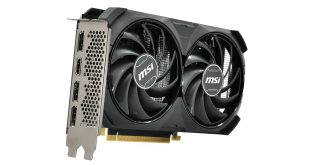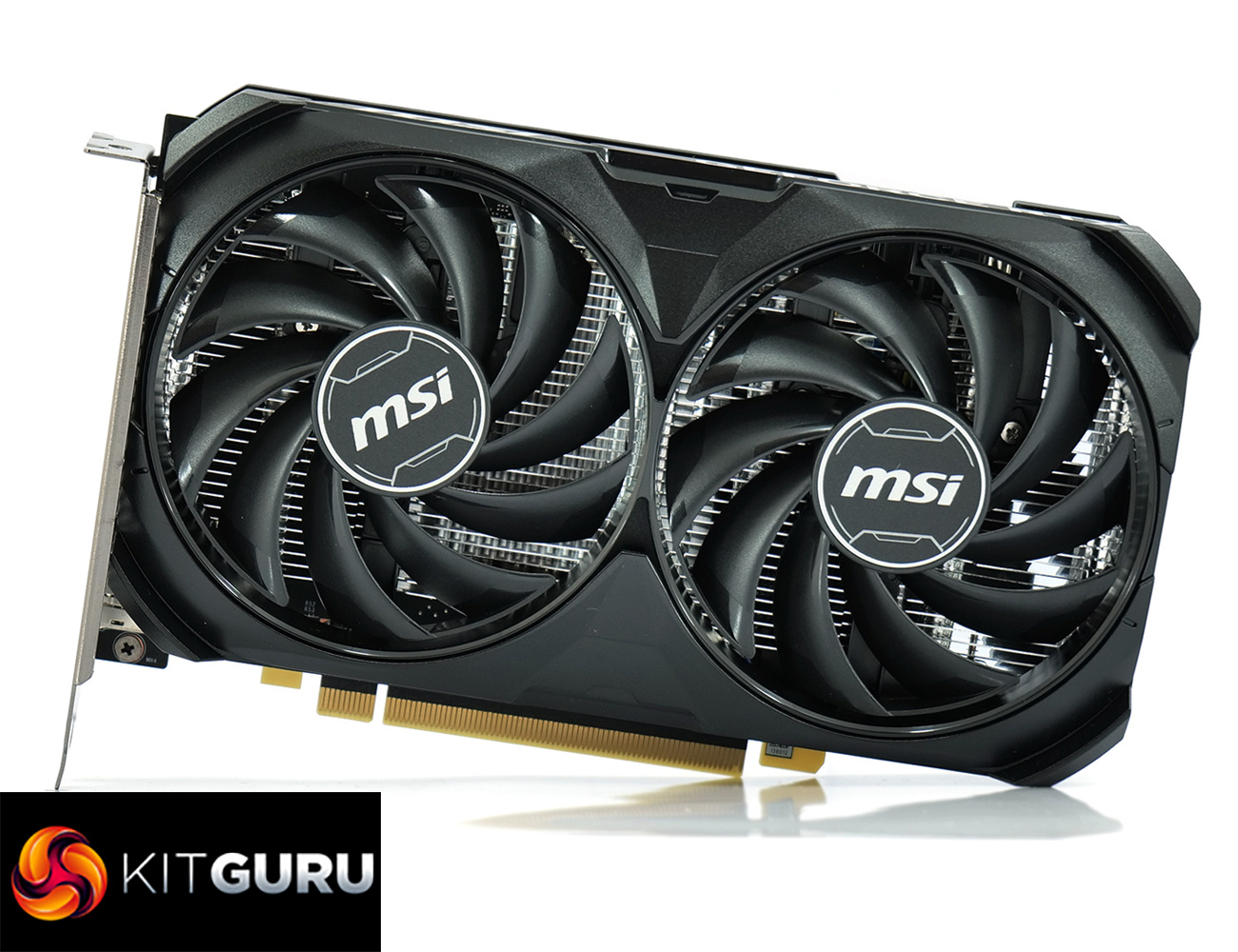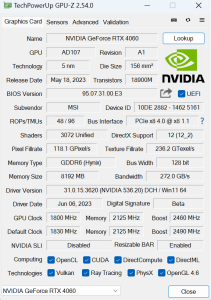
It's been just over a month since the disastrous launch of the RTX 4060 Ti, and despite originally being slated to hit the market in July, today marks the official release for the RTX 4060 (non-Ti). Utilising AD107 silicon, this new GPU offers a cut-down die at a cut-down price, landing on shelves for £289/$299. Today we put the RTX 4060 through its paces and assess gaming performance, ray tracing, power draw, efficiency and much more.
There's no doubt that the RTX 4060 Ti was the most poorly received of the RTX 40-series GPUs so far, and it seems likely Nvidia brought the RTX 4060 release window forward in an effort to move on as quickly as possible. Hitting shelves tomorrow, June 29th, today we are able to share our full review of this new graphics card.
RTX 4060 also marks the first time we've seen AD107 silicon in the desktop space, having previously been used for RTX 4050 and RTX 4060 Laptop chips. It's an absolutely tiny die, measuring 146mm2, and accordingly RTX 4060 is the lowest-power 40-series GPU to date, with a TGP of just 115W. RTX 4060 is also launching with no Founders Editions available, and so today we are checking out the MSI Ventus 2X Black model.
If you want to read this review as a single page, click HERE.
| RTX 4070 Ti | RTX 4070 | RTX 4060 Ti | RTX 4060 | RTX 3060 Ti | RTX 3060 | |
| Process | TSMC N4 | TSMC N4 | TSMC N4 | TSMC N4 | Samsung 8N | Samsung 8N |
| SMs | 60 | 46 | 34 | 24 | 38 | 28 |
| CUDA Cores | 7680 | 5888 | 4352 | 3072 | 4864 | 3584 |
| Tensor Cores | 240 | 184 | 136 | 96 | 152 | 112 |
| RT Cores | 60 | 46 | 34 | 24 | 38 | 28 |
| Texture Units | 240 | 184 | 136 | 96 | 152 | 112 |
| ROPs | 80 | 64 | 48 | 48 | 80 | 48 |
| GPU Boost Clock | 2610 MHz | 2475 MHz | 2535 MHz | 2460 MHz | 1665 MHz | 1777 MHz |
| Memory Data Rate | 21 Gbps | 21 Gbps | 18 Gbps | 17 Gbps | 14 Gbps | 15 Gbps |
| L2 Cache | 49152 KB | 36864 KB | 32768 KB | 24576 KB | 4096 KB | 3072 KB |
| Total Video Memory | 12GB GDDR6X | 12GB GDDR6X | 8GB GDDR6 | 8GB GDDR6 | 8GB GDDR6 | 12GB GDDR6 |
| Memory Interface | 192-bit | 192-bit | 128-bit | 128-bit | 256-bit | 192-bit |
| Memory Bandwidth | 504 GB/Sec | 504 GB/Sec | 288 GB/Sec | 272 GB/Sec | 448 GB/Sec | 360 GB/Sec |
| TGP | 285W | 200W | 160W | 115W | 200W | 170W |
First, for a quick spec recap. The RTX 4060 Ti marks the first appearance of the AD107 silicon in the desktop space, a tiny die measuring just 146mm2. Despite being a new die, it is closely related to AD106, and the fundamental building blocks are still the same, with the RTX 4060 offering a total of 24 Streaming Multiprocessors (SMs), each housing 256 CUDA Cores, for a total of 3072. We also find 24 RT cores, 96 Tensor cores, 96 Texture Units, and 48 ROPs.
TSMC's N4 node has Nvidia cranking up the clock speed significantly this generation, although the RTX 4060 is actually clocked slightly lower than its bigger siblings, sporting a 2460MHz rated boost clock. We would still expect GPU Boost to push actual clock speed higher, but we examine that later in this review.
The memory configuration is an area with great similarities to AD106. We find the same 128-bit memory interface, paired with 8GB GDDR6, although the memory itself is clocked slightly slower at 17.Gbps. That brings total memory bandwidth down to 272 GB/s, noticeably lower than the RTX 3060. That said, there has been a substantial upgrade to the L2 cache with the Ada architecture, with the RTX 4060 now offering 24MB, compared to just 3MB for GA106.
As with the RTX 4060 Ti, the PCIe bus has also been reduced, so the 4060 offers a Gen4 x8 interface, as opposed to Gen4 x16 connectors on the RTX 4070 and up.
Considering these cut-backs, power draw is naturally lower than even the RTX 4060 Ti, with the 4060 boasting a 115W TGP. This is something we focus on closely, using our updated GPU power testing methodology in this review, so read on for our most detailed power and efficiency testing yet.
 KitGuru KitGuru.net – Tech News | Hardware News | Hardware Reviews | IOS | Mobile | Gaming | Graphics Cards
KitGuru KitGuru.net – Tech News | Hardware News | Hardware Reviews | IOS | Mobile | Gaming | Graphics Cards




